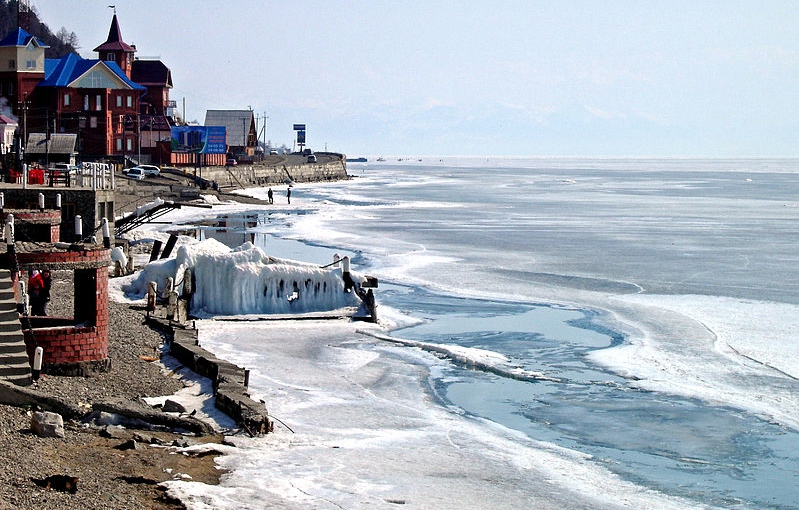The world renowned Lake Baikal is situated in Siberia which is a land that totals up to a little lesser than eighty percent of the total land mass of Russia. Lake Baikal is one of the largest freshwater lakes on the planet and contains more than twenty per cent of all the freshwater this is available on the planet. This is the largest freshwater lake that we have on our planet Earth. To understand this statistic better, if one was to drain out all the water from this river, it would take the water from the five great rivers to fill it up all over again.
The lake over here has water that is clear like crystal; it shines and glimmers like the clarity of glass. The lake is also known to be one of the most brilliant for its beauty. The lake is also known to have a great number of species of plants and animals that call this their native home. The nature of the flora and fauna of this region is so specific that it cannot be found anywhere in the world. Baikal, as if these many qualities were not stunning enough, is also the deepest lake in the world. Some regions of these lakes go so deep that they go to a depth of more than a mile into the surface of the Earth.

Lake Baikal is not one that became famous in recent times; it is one that has held in captivity the imaginations of many in the past. According to the popular folklore of the region, the Olkhon Island that is in the lake was the place where the ruthless Mongol leader Genghis Khan was born. The lake has come under a great amount of study ever from the time that the river was first explored by Russians undergoing a trip to this place in the year 1643. It was Peter I who first asked for the Lake Baikal to be examined using scientific methods. However, no matter how advanced their methods were at the time, it was impossible to accurately determine how deep the lake was. This was possible in the latter half of the twentieth century, when technology had improved much more. Some of the discoveries that were only made recently showed the superb nature of this lake.
One of the most important and interesting features of this lake is it geographical placement. The place has been known to be one of the most tectonically active places in the world. Nestled between three distinct tectonic plates, this place is active in the sense that it experiences a whole range of minor earthquakes from time to time. These earthquakes are the cause of a the circulation of the water of the lakes as the heat from the thermal vents keeps pushing the water. This causes an unusual amount of oxygen to be present in the water. Since the oxygenation of the water is in such a large amount, the plant and animal life that one will see in this place is much more, and quite a bit varied to normal plants and animals. Moreover, the oxygenation of the water causes the flora and fauna of the region to be found at much greater depths than would be found otherwise.
The animals and plants that one finds over here, are astounding, to say the least. One of the most amazing species of fauna found over here includes the largest flatworm on earth, which when fully grown, grows to a length of around sixteen inches. This is one of the only species of flatworm on the planet that hunts for its food. As we said earlier, Lake Baikal, although being immensely deep is also one of the clearest in the world. The water of this lake can be seen for a cool one hundred and thirty feet. This is because the lake has a grand population of a small crayfish known as Baikal Epishura. This species of crayfish is known to eat the algae and other particles in the water that make the water seem unclear. This lake, Lake Baikal is also the native of a species of seals called the Nerpa. Nerpa is one of the few rare species of seals that live in freshwater. The bodily properties of these seals are different from those of salt-water seals, as in the freshwater one of Lake Baikal have 4 more pints of blood than it. This means that the seals can lived in stale air for a period of at least seventy minutes. These seals are also known to swim to below three hundred meters of the surface of the lake. The dens that they live in are made out of ice.
All in all, all the different factors that make Lake Baikal up are the very reason that it is considered a wonder of the natural world. Lake Baikal is the grandest example in nature of beauty due to the conjoining of different factors like geographical features, marine diversity and lack of human interference.
